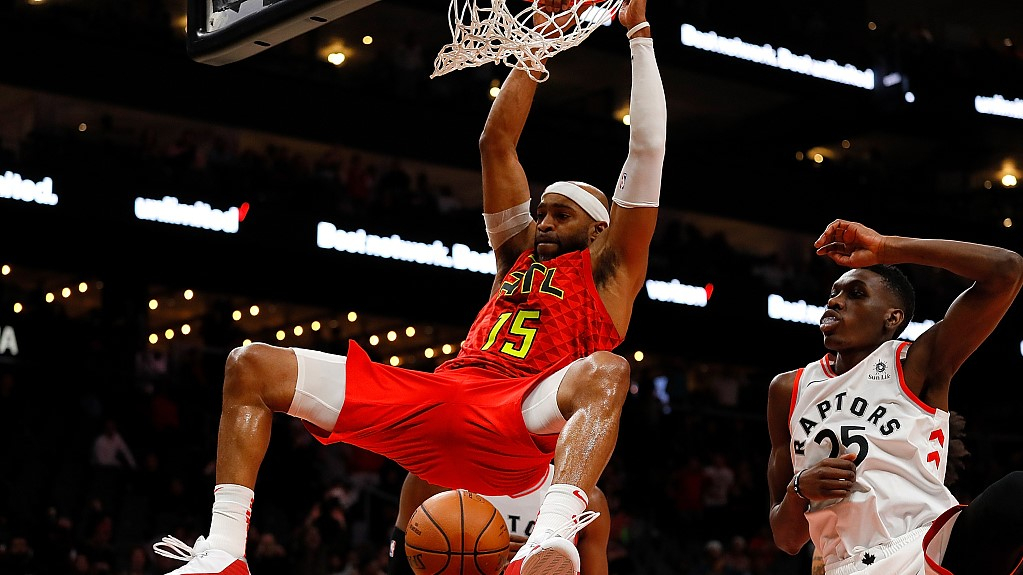
Vince Carter, #15 of the Atlanta Hawks, dunks in the game against the Toronto Raptors at the State Farm Arena in Atlanta, Georgia, November 21, 2018. /VCG
Vince Carter, #15 of the Atlanta Hawks, dunks in the game against the Toronto Raptors at the State Farm Arena in Atlanta, Georgia, November 21, 2018. /VCG
NBA Commissioner Adam Silver on Monday said in an interview that he had no idea when the 2019-20 regular season would resume. That made some fans worry: Will Vince Carter be able to finish his 22nd season?
Back in the early 2000s, Carter and his cousin Tracy McGrady, Allen Iverson and Kobe Bryant were known as the "Greatest four SGs (shooting guard)" in China. However, even if you checked with Carter's biggest fan, no one would assume that he could still be able to play in the league at the age of 43 years old.
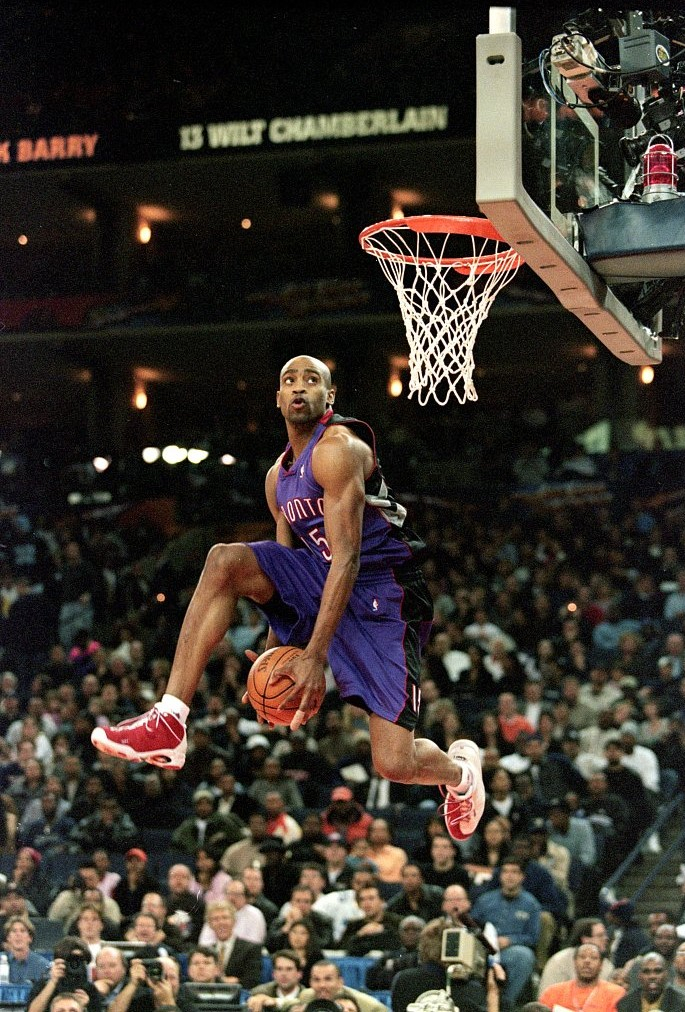
Vince Carter of the Toronto Raptors dunks in the NBA All-Star Slam Dunk Contest at the Oakland Coliseum in Oakland, California, February 13, 2000. /VCG
Vince Carter of the Toronto Raptors dunks in the NBA All-Star Slam Dunk Contest at the Oakland Coliseum in Oakland, California, February 13, 2000. /VCG
Carter was selected by the Golden State Warriors with the No. 5 pick in the 1998 NBA Draft before he was traded to the Toronto Raptors. Having averaged 18.3 points, 5.7 rebounds and three assists per game, he was quite impressive as a rookie. After that All-Star night when he redefined what slam dunk should look like, the whole league fell in love with "Half Man, Half Amazing."
However, it must be pointed out that Carter at that time was considered overrated because of his unmatchable dunking. Sure, his leaping ability, explosiveness and body control were all terrific, his first step in penetration was also remarkable, but his movement was problematic. He wasn't as fast as Michael Jordan, nor was he as agile as Bryant.
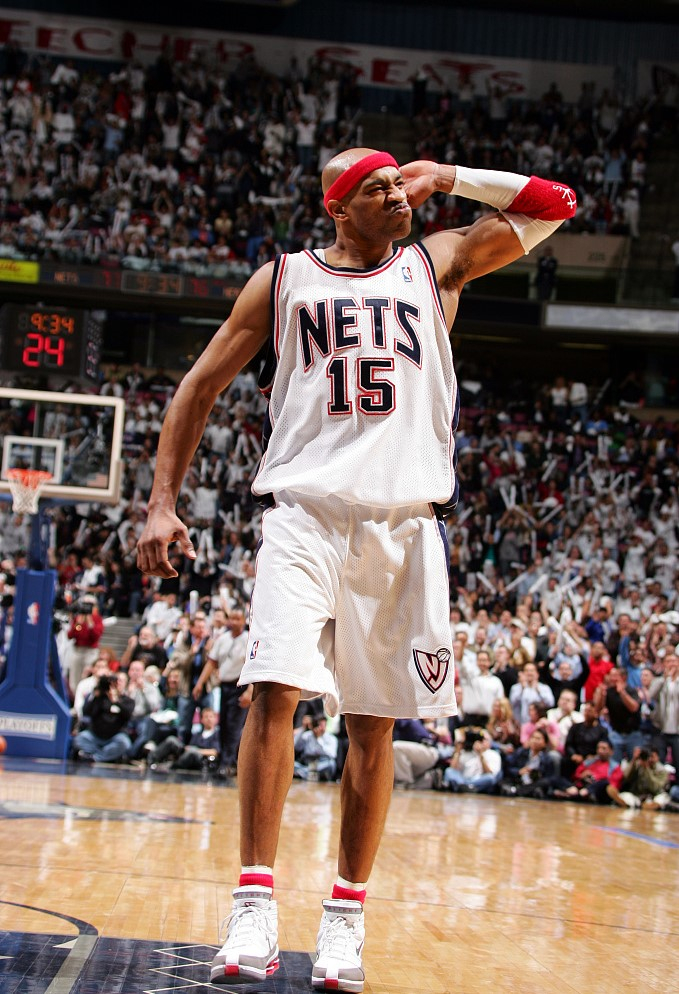
Vince Carter of the New Jersey Nets reacts in Game 3 of the NBA playoffs against the Miami Heat at the Continental Airlines Arena in East Rutherford, New Jersey, April 28, 2005. /VCG
Vince Carter of the New Jersey Nets reacts in Game 3 of the NBA playoffs against the Miami Heat at the Continental Airlines Arena in East Rutherford, New Jersey, April 28, 2005. /VCG
That explained why Carter sometimes was considered not aggressive enough. It's more difficult for him to completely dodge the defender and he lacked enough finishing moves under the rim – if he could not dunk, Carter was usually left with one option – the floater.
Moving also limited Carter's defense. His blocking and offensive rebounding were both ferocious, but as he lacked quick short steps, Carter was not able to follow perimeter slashers, especially when the opponent called for screens.
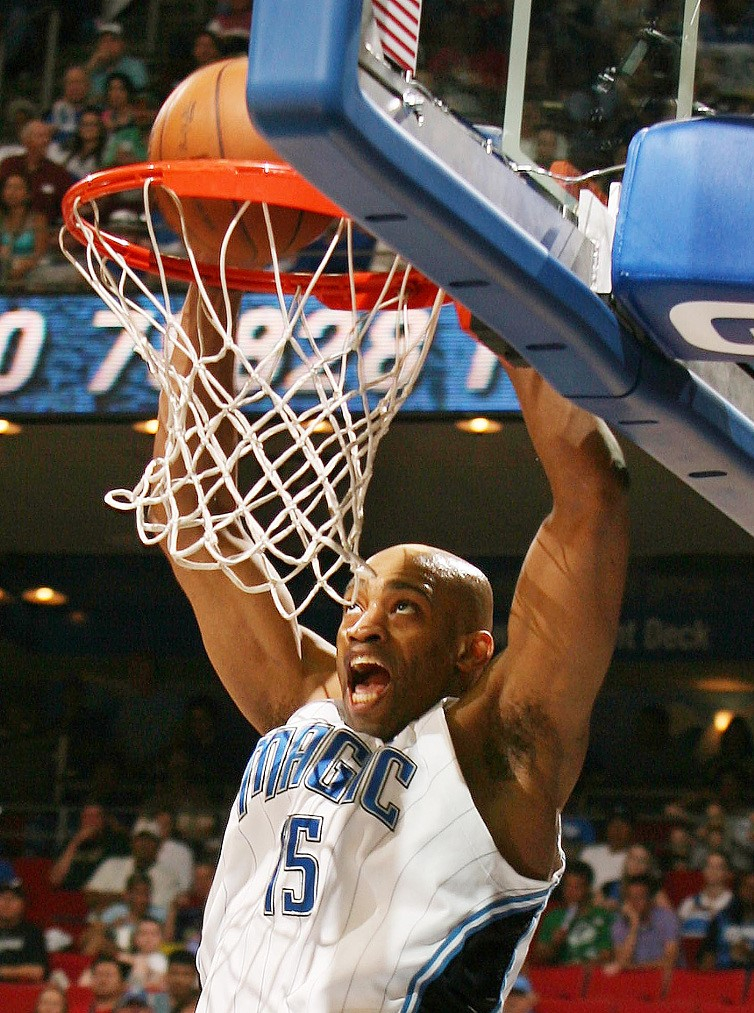
Vince Carter of the Orlando Magic dunks in the game against the Memphis Grizzlies at the Amway Arena in Orlando, Florida, April 4, 2010. /VCG
Vince Carter of the Orlando Magic dunks in the game against the Memphis Grizzlies at the Amway Arena in Orlando, Florida, April 4, 2010. /VCG
Nonetheless, none of those stopped Carter from being a star in the league. He developed reliable 3-pointer shooting from the second season and once buried nine shots from downtown to get 50 points in the epic series against Iverson and his Philadelphia 76ers in the 2001 NBA playoffs.
Carter's middle-range posting up was also underestimated and most importantly, he was never a ball hog – someone who handles the ball exclusively to the point of impairing the team – but a pleasant teammate to work with.
In the 2002-03 season Carter began to suffer injuries in both knees, which might have reminded him how vulnerable jumpers could be in the league. In the following season, he had a fallout with the Raptors and requested the team to trade him. After the team rejected him, Carter began to loaf on the court – in his last 20 games with the Raptors, he averaged only 15.9 points per game and only finished 11 dunks.
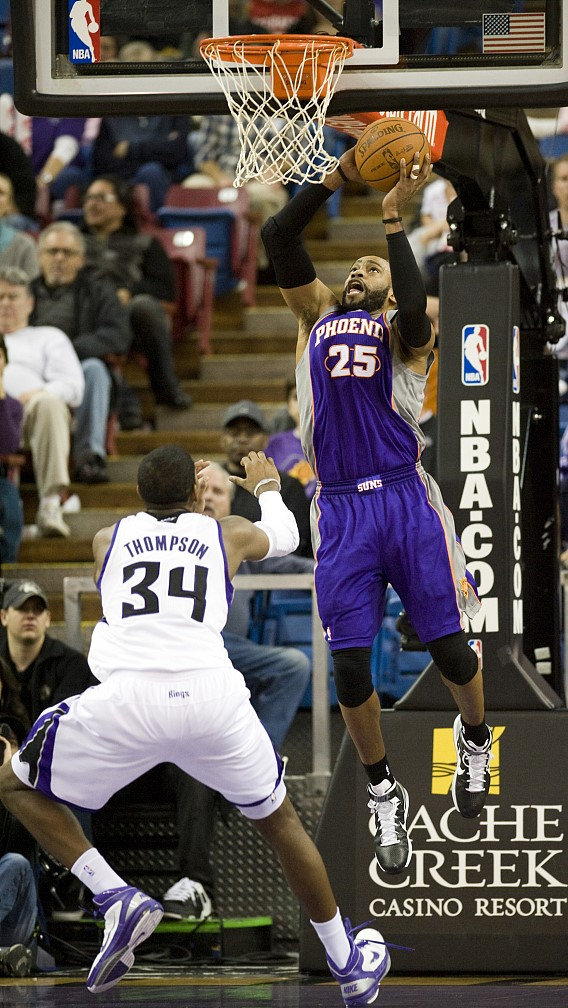
Vince Carter, #25 of the Phoenix Suns, drives towards the rim in the game against the Sacramento Kings at the Arco Arena in Sacramento, California, January 2, 2011. /VCG
Vince Carter, #25 of the Phoenix Suns, drives towards the rim in the game against the Sacramento Kings at the Arco Arena in Sacramento, California, January 2, 2011. /VCG
The Raptors had no choice but to send him to the New Jersey Nets. As soon as he arrived at the new team Carter became "Air Canada" again by dropping 27.5 points, 5.9 rebounds, 4.7 assists and 59 dunks in 57 games.
Though Carter did not have that sky walking body his anymore, he actually reached the peak of his career in the Nets. First, he's much healthier and only missed 11 games in the next three seasons. Second, he's happier on the court as he finished 87 and 86 dunks in the 2005-06 and 2006-07 seasons, more than he did in any other season in the Raptors.
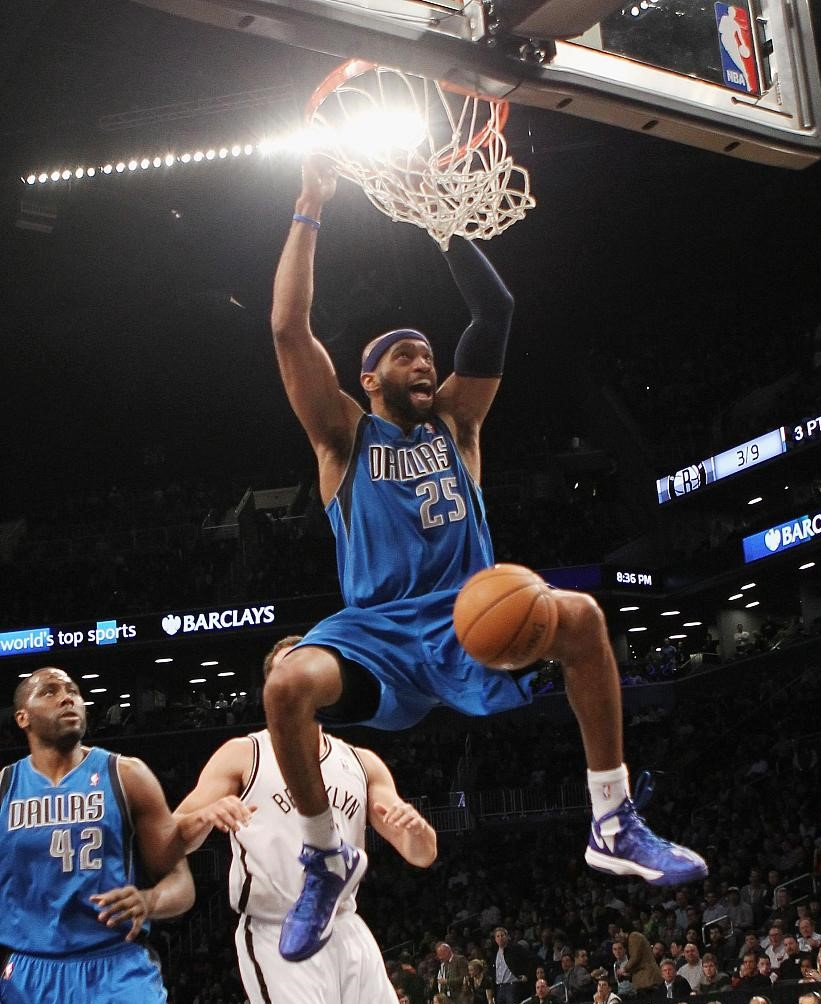
Vince Carter, #25 of the Dallas Mavericks, dunks in the game against the Brooklyn Nets at the Barclays Center in Brooklyn, New York City, March 1, 2013. /VCG
Vince Carter, #25 of the Dallas Mavericks, dunks in the game against the Brooklyn Nets at the Barclays Center in Brooklyn, New York City, March 1, 2013. /VCG
Furthermore, Carter learned how be a team leader. His 23+6+4 per game from 2005 to 2009 aside, Carter was enjoying sharing the ball with Jason Kidd. Thanks to his vision, Carter became the Net's first orchestrating choice in dishing out and head of the key. His off-ball offense grew even better as he could always receive the ball from Kidd after coming off the screen.
More importantly, Carter became a better defender in his years in the Nets. He managed to buckle down in half-court defense and run faster back. Though his stealing and blocking numbers dropped, Carter began to make true defensive contributions to the team.
In 2007, 30-year-old Carter played his last All-Star Game in his ninth season. Next season, Kidd left, Devin Harris became the Nets' first offensive choice. Nonetheless, Carter was okay with that – his 21+5+5 stats could not be better for a second-in-command.
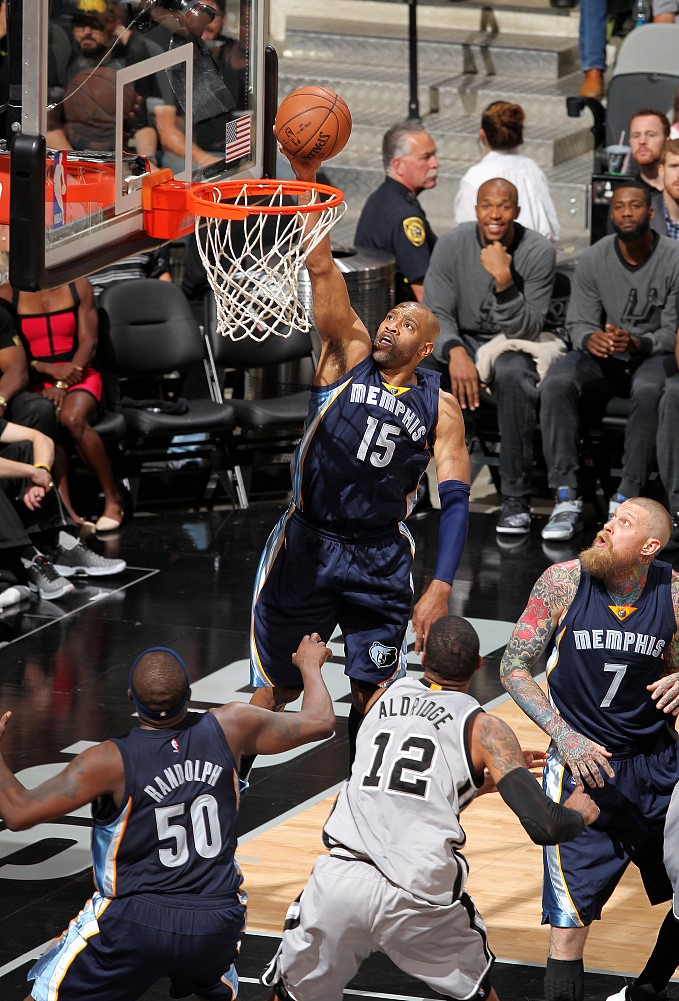
Vince Carter, #15 of the Memphis Grizzlies, dunks in Game 1 of the NBA playoffs against the San Antonio Spurs at the AT&T Center in San Antonio, Texas, April 17, 2016. /VCG
Vince Carter, #15 of the Memphis Grizzlies, dunks in Game 1 of the NBA playoffs against the San Antonio Spurs at the AT&T Center in San Antonio, Texas, April 17, 2016. /VCG
When he was traded to the Orlando Magic in summer 2009, Carter was not a star anymore, but he accepted it. From 2009 to 2019, he went to six teams. When the team needed him to reduce his scoring and pass more, he said "okay"; when they wanted him to be a 3D player, Carter gave them what they wanted; when teams could only give him less than 20 minutes on the court, Carter was just sitting there, happy and always ready to step onto the court.
When he was young, Carter saw the best scenery from the top – he was four-time-All-Star voting leader from 2000-2004, beating McGrady, Bryant, Iverson and Shaquille O'Neal in their best years as well as Jordan who returned for the second time. Then he grew older, ceased to be a star, learnt what it felt like to be a role player but he accepted it and played like that for another 12 seasons.

Vince Carter, #15 of the Sacramento Kings, dunks in the game against the Los Angeles Lakers at the Staples Center in Los Angeles, California, January 9, 2018. /VCG
Vince Carter, #15 of the Sacramento Kings, dunks in the game against the Los Angeles Lakers at the Staples Center in Los Angeles, California, January 9, 2018. /VCG
Iverson, McGrady, Bryant, Paul Pierce, Ray Allen, Steve Nash, Kidd - all of them already left, but Carter is still playing. He did not go to a championship winning team to earn a ring, but only wanted to join a team that would actually give him some time on the court.
"Don't think you're bigger than the game. Nobody is bigger than the game."